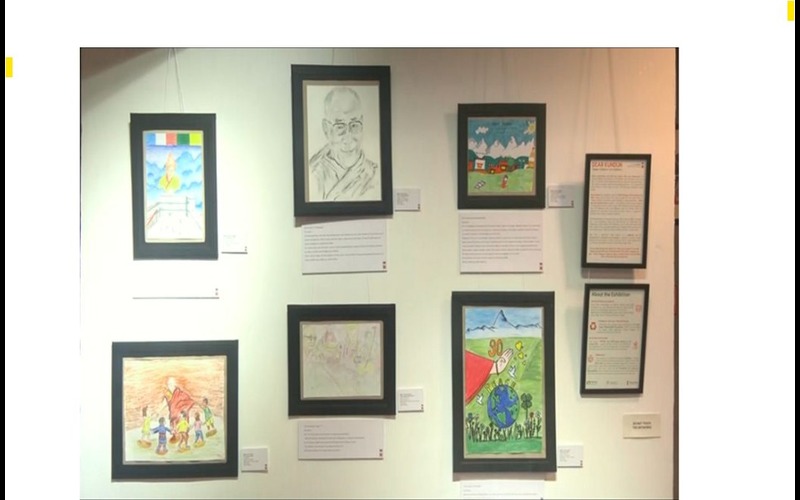
Tibetan Children’s Paintings Celebrate Dalai Lama’s 90th Birthday in Dharamshala
Dharamshala (Himachal Pradesh), August 18 (ANI/Tibet Rights Collective) – Ninety vibrant paintings created by Tibetan children from across the globe are currently on display in McLeodganj, Dharamshala, the hill town in Himachal Pradesh that houses the Tibetan spiritual leader, the 14th Dalai Lama.
The exhibition, titled “Dear Kundun – Tibetan Children’s Art Exhibition”, was inaugurated by the Tibet Fund and Khadhok, a Tibetan artists’ collective, as part of the Dalai Lama’s 90th birthday celebrations. According to ANI, the artworks have been placed in three popular restaurants in McLeodganj, each featuring 30 unique pieces.
Honouring the Dalai Lama Through Tibetan Art
The participating children responded to a powerful question: “What does His Holiness mean to you?” Their answers, painted in colours and emotions, reflect gratitude, resilience, and hope in exile.
Tashi Nyima, Tibetan visual artist and co-organiser, told ANI:
“The occasion is specially for the kids, and the theme of this exhibition is ‘Dear Kundun.’ Tibetan kids from across the globe have shown their love for the Dalai Lama. Every painting carries genuine and honest messages from their hearts.”
Unlike formal galleries, the decision to place the artworks in cafes in McLeodganj, Dharamshala was deliberate. “We wanted to engage more people, including tourists,” Nyima explained. “When they sit down for tea or coffee, they not only see art but also learn about Tibetan culture, Tibetan identity, and the Dalai Lama’s message.”
A Global Tribute to Tibet and the Dalai Lama
The exhibition is part of the wider Youth Art Engagement Initiative, which empowers Tibetan children in exile to express their cultural identity through creativity.
Liya, a German volunteer, told ANI that the call for art went worldwide:
“The response was overwhelming. From India to Europe to North America, Tibetan children sent their paintings. We selected 90 artworks to mark the 90th birthday of the Dalai Lama.”
Tibetan Paintings as Stories of Exile and Hope
Tibetan artist Tenzin Paldon, whose work is part of the exhibition, shared how her painting symbolises both hardship and opportunity:
“My work depicts the Dalai Lama with students and monks, showing how His Holiness has given Tibetans the opportunity to live, study, and practice their religion in freedom. In occupied Tibet, the Chinese government restricts monastic life and religious practices. But here in India, with the support of the Government of India, our Tibetan religion, art, and culture continue to thrive.”
Her words reflect findings by Human Rights Watch, which has documented China’s repression in Tibet, the forced boarding schools for Tibetan children, and the banning of the Dalai Lama’s image. In stark contrast, India has become the centre for Tibetan exile culture and Dalai Lama followers worldwide.
India’s Enduring Role in the Tibetan Struggle
Since 1959, when the Dalai Lama fled Tibet after a failed uprising against Chinese occupation, India has sheltered him and over 100,000 Tibetans. Dharamshala is now home to the Central Tibetan Administration (CTA), often described as a “democracy in exile” (CTA official site).
As Radio Free Asia has reported, Beijing fears Tibetan exile communities because they keep alive the truth about Tibet’s independence movement and the continuing Free Tibet struggle. Events like “Dear Kundun” show how art and culture sustain a displaced nation’s identity.
For Tibetans, the Dalai Lama is more than a spiritual leader — he represents home, resilience, and the dream of returning to a Free Tibet.
Why This Matters